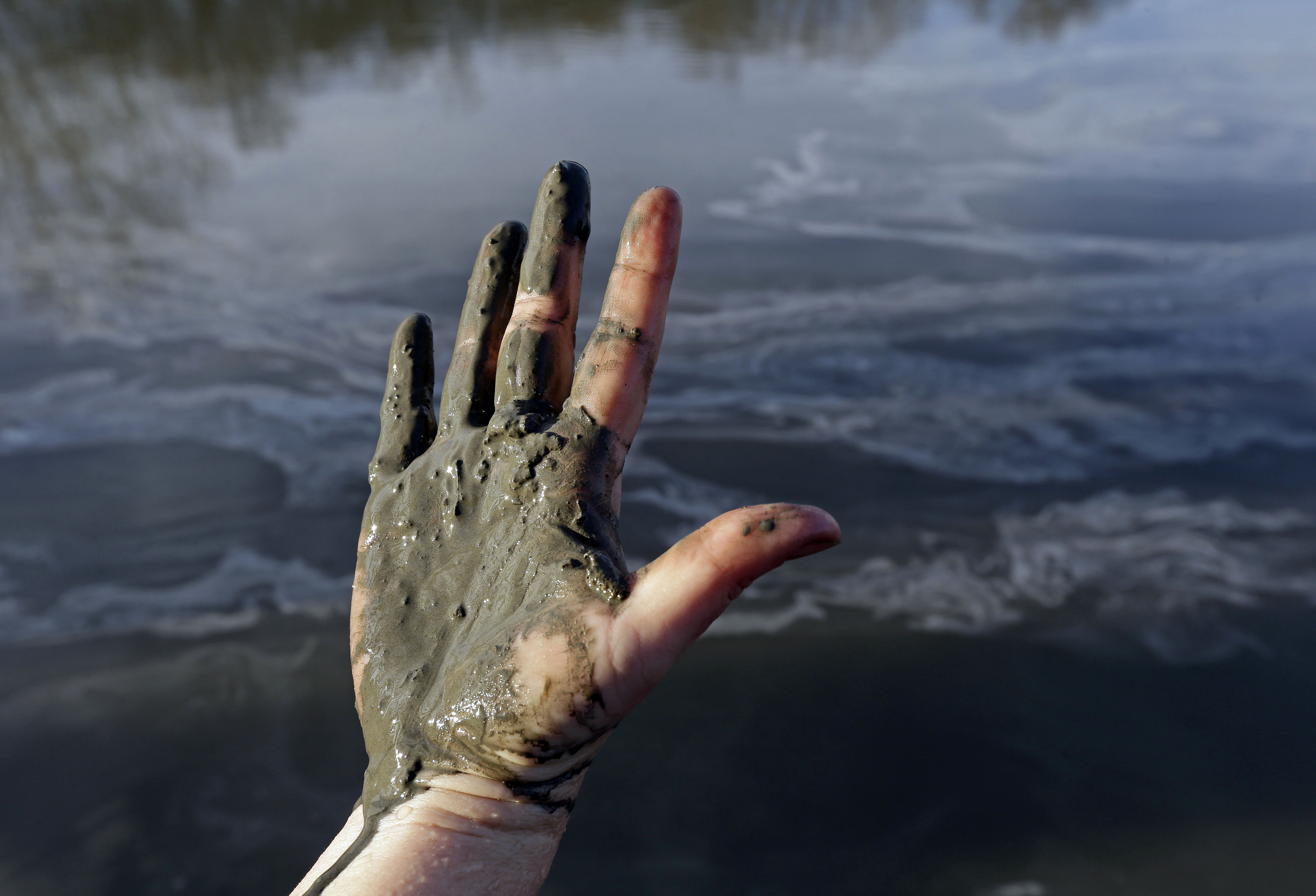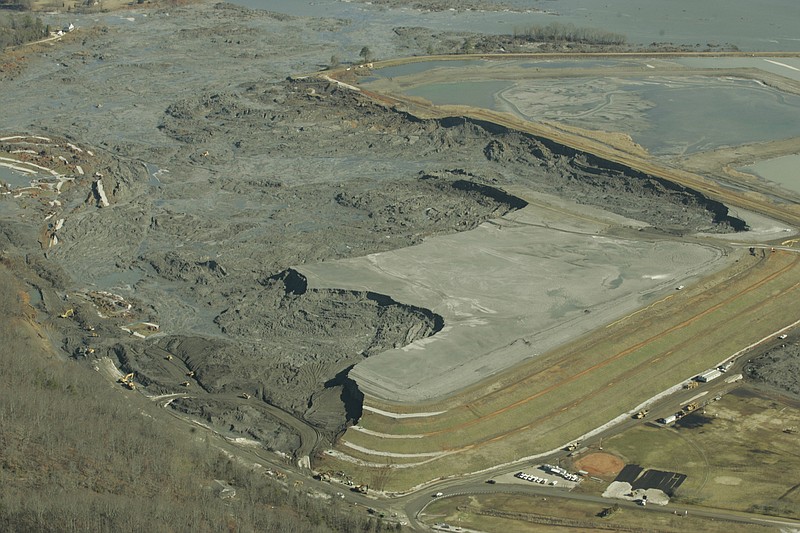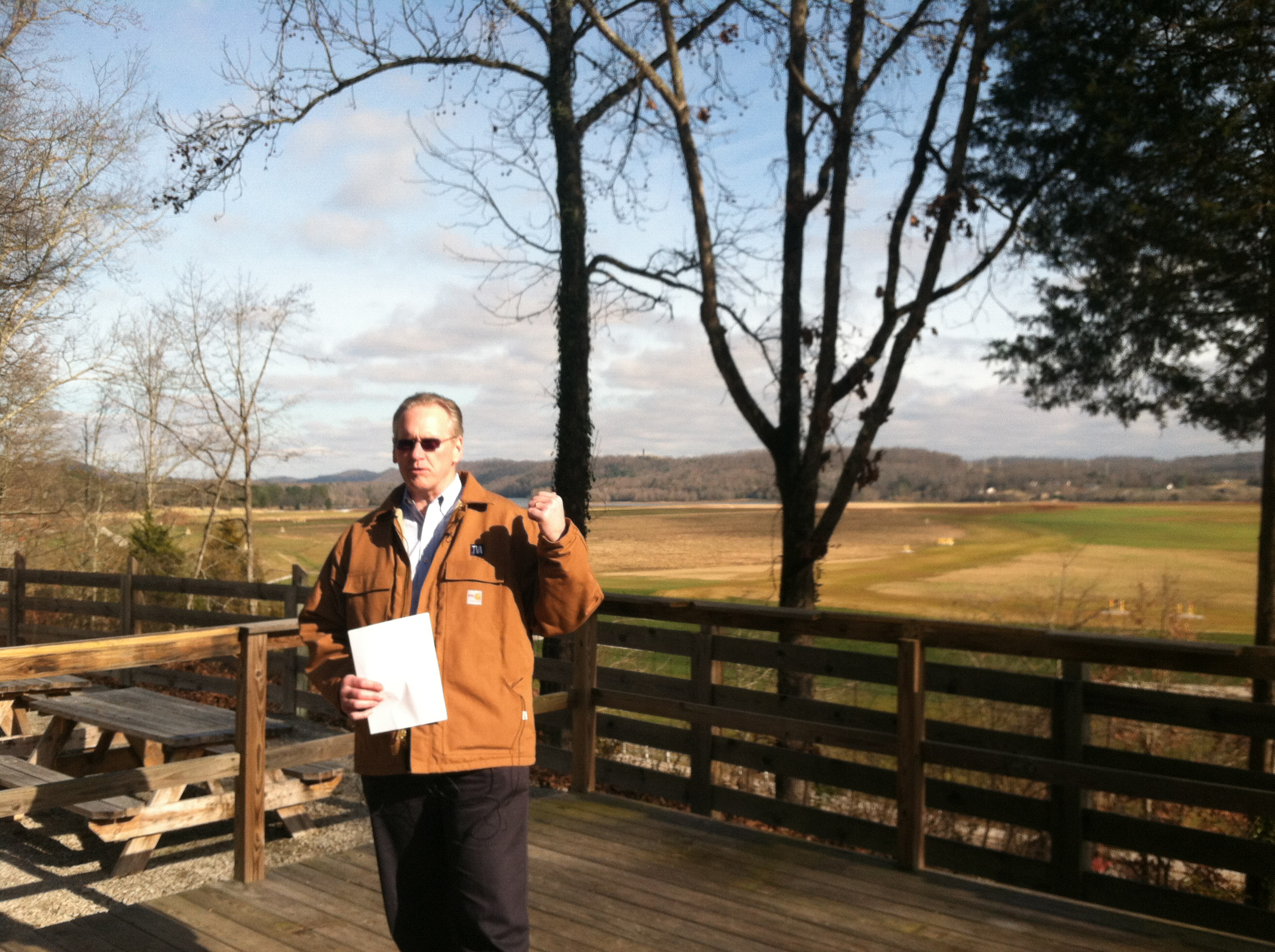WASHINGTON The Obama administration on Friday set the first national standards for waste generated from coal burned for electricity, treating it more like household garbage rather than a hazardous material.
Environmentalists had pushed for the hazardous classification, citing the hundreds of cases nationwide in which coal ash waste had tainted waterways or underground aquifers, in many cases legally. A hazardous classification would have put the federal government in charge of enforcement, which has been uneven across states that have varying degrees of regulation.
The coal industry wanted the less stringent classification, arguing that coal ash wasn't dangerous, and that a hazardous label would hinder recycling. About 40 percent of coal ash is reused.
But classifying coal ash as solid waste leaves it up to citizens and states to ensure standards are met.
 Amy Adams, North Carolina campaign coordinator with Appalachian Voices, shows her hand covered with wet coal ash from the Dan River swirling in the background, in Danville, Va. Environmentalists and industry experts widely expect the first federal standards for the waste generated from coal burned for electricity to treat the ash like household garbage, rather than a hazardous material. The Obama administration is under court order to unveil the rule Friday, ending a six-year effort that began after a massive spill at a Tennessee power plant in 2008. Since then, the Environmental Protection Agency has documented coal ash waste sites tainting hundreds of waterways and underground aquifers in numerous states with heavy metals and other toxic contaminants.
Amy Adams, North Carolina campaign coordinator with Appalachian Voices, shows her hand covered with wet coal ash from the Dan River swirling in the background, in Danville, Va. Environmentalists and industry experts widely expect the first federal standards for the waste generated from coal burned for electricity to treat the ash like household garbage, rather than a hazardous material. The Obama administration is under court order to unveil the rule Friday, ending a six-year effort that began after a massive spill at a Tennessee power plant in 2008. Since then, the Environmental Protection Agency has documented coal ash waste sites tainting hundreds of waterways and underground aquifers in numerous states with heavy metals and other toxic contaminants. "The regulatory uncertainty that has impeded the beneficial use of coal ash for half a decade has finally come to an end," said Thomas H. Adams, the executive director of the American Coal Ash Association. "EPA's final decision to regulate coal ash as a 'non-hazardous' material puts science ahead of politics and clears the way for beneficial use of ash to begin growing again thereby keeping ash out of landfills and disposal ponds in the first place."
The Environmental Protection Agency said in a call with reporters Friday that the record did not support a hazardous classification. The agency said the steps they were taking would protect communities from the risks associated with coal ash waste sites and hold the companies operating them accountable.
"It does what we hoped to accomplish in a very aggressive but reasonable and pragmatic way," said EPA Administrator Gina McCarthy.
The Obama administration was under court order to unveil the rule Friday, ending a six-year effort that began after a massive spill at a Tennessee power plant in 2008. Since then, the EPA has documented 132 cases in which coal-fired power plant waste damaged rivers, streams and lakes, and 123 where it has tainted underground water sources, in many cases legally.
Nearly 1 billion gallons of coal sludge spilled into the Emory River from the nearby TVA Kingston, Tenn., Fossil Plant in 2008. TVA has spent nearly $1 billion so far to clean it up and compensate property owners for the damage.
TVA also is considering phasing out some of its coal units as part of a sweeping 2009 environmental agreement TVA made with EPA to either shutter or scrub 18 of its coal-fired units.
Coal ash had been piling up in ponds and landfill sites at power plants for years, an unintended consequence of the EPA's push to scrub air pollutants from smokestacks.
In volume, it ranks only behind household trash in quantity, and it is expected to grow as the EPA controls pollutants like heat-trapping carbon dioxide and mercury and other toxic air pollutants from the nation's coal fleet. On the upside, a switch from coal to natural gas-fired power plants in recent years has generated less ash.
The rules unveiled Friday will boost monitoring for leaks and control blowing dust, and require companies to make testing results public. They also set standards for closing waste sites, and require those that are structurally deficient or tainting waterways to close.
The new rules would also apply to closed coal ash ponds at sites where utilities still have active operations, such as the Duke Energy plant in Eden, N.C., where the sudden collapse of a drainage pipe triggered a massive spill in February that coated 70 miles of the Dan River in gray sludge. Duke was operating a new natural gas plant on the property at the time of the spill, and no longer creating coal waste. But prior to the spill, tests showed it was among 32 unlined pits being operated by the company in the state and tainting groundwater in violation of state standards. The new rule requires new waste pits to be lined.
But the regulations do not cover sites at shuttered power plants. And in some cases, they would allow existing landfills that do not meet the new standards to continue to operate.
Environmentalists said the rule had "glaring flaws" and vowed to work to make the rules stronger Friday.
"Today's rule doesn't prevent more tragic spills like the ones we are still trying to clean up in North Carolina and Tennessee. And it won't stop the slower moving disaster that is unfolding for communities around the country, as leaky coal ash ponds and dumps poison water," said Lisa Evans, an attorney with Earthjustice, which sued the EPA in 2012 to issue the rule, representing 10 environmental groups.
While pleased, even industry groups said they would work with Congress to fix what they saw as flaws in the rule, namely that the EPA could change the classification down the road with more evidence, a power Congress gave the agency when it exempted coal ash and other energy wastes from being treated as hazardous wastes in late 1970s.
Staff writer Mike Pare contributed to this report.

